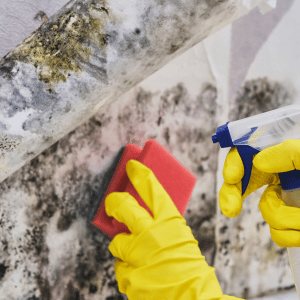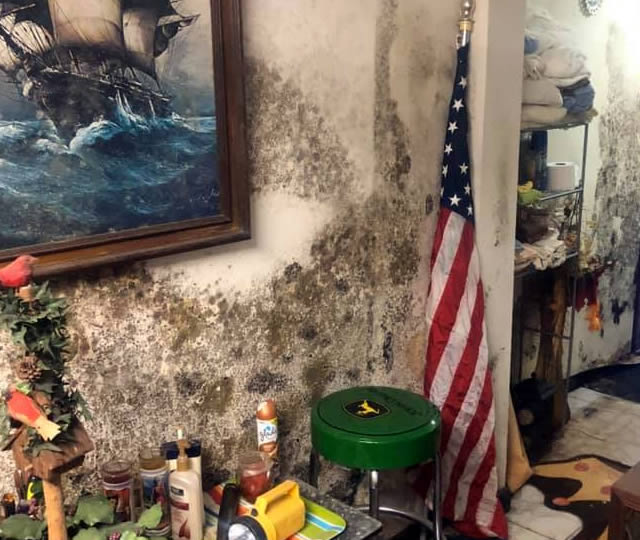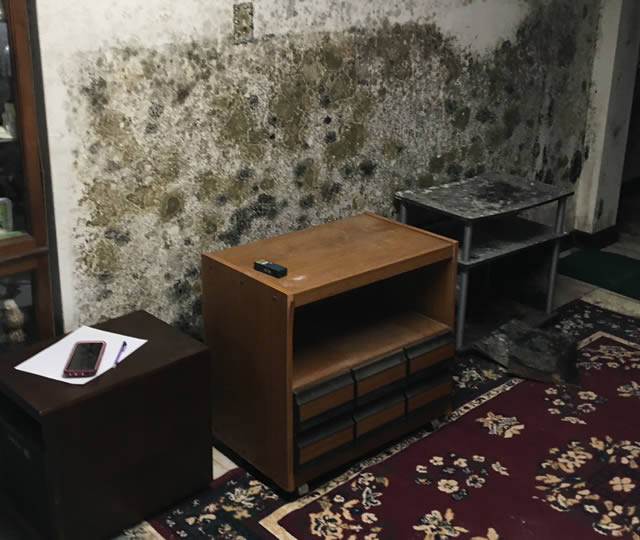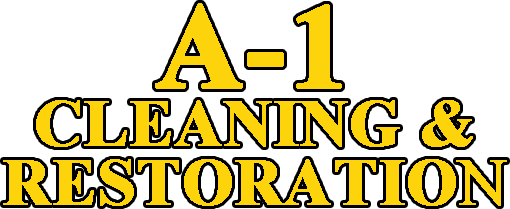ANY WHERE,TIME,DAY
MOLD REMOVAL
Mold Removal & Restoration in Southern Georgia
Finding mold in your home or business can be a frightening experience which is why it’s imperative that you reach out to a reputable restoration company to address the issue. Left untreated mold damage can cause structural issues to a property and even make the inhabitants sick. A-1 Cleaning & Restoration is certified through the Institute of Inspection Cleaning and Restoration Certification (IICRC) and National Organization of Remediators and Mold Inspectors (NORMI) to mitigate and remediate mold damage.
We will work tirelessly to ensure that your property is returned to its pre-loss state so that you and your loved ones once again feel safe. We offer free estimates and will work directly with your insurance company.

Signs of Mold Damage
Can Mold Damage Make You Sick?

- Musty or earthy odor
- Consistently high humidity
- Untreated water damage
- Sudden allergies or health issues
- Visible microbial growth
- Active leaks
- Past flooding
While it is true that mold is a naturally occurring organism, an excessive number of spores inside one’s home or business can cause health issues. Mold thrives in dark, damp places and can survive off minimum amounts of water.
As the organism spreads it eats away at the material affected and will grow more potent, further deteriorating the air quality around the damaged area.
Some known symptoms associated with mold exposure are:
- Sneezing
- Eye irritation
- Headache
- Lung irritation
- Coughing
- Sore throat
- Skin irritation
Common Types Of Mold
Acremonium is a toxic mold that can be seen growing in various colors like pink, grey, orange, or white. This species begins moist but will turn into a powdery substance and change color. Acremonium has a high affinity for water and reproduces easily in cooling coils, drain pans, window seals, and humidifiers. This species can release toxins given the right growth conditions and is regularly found growing alongside Stachybotrys (black mold).
Alternaria is one of the most frequent forms of allergenic mold. This means that symptoms from this type of mold exposure will normally align with allergy symptoms like coughing, watery eyes, and sinus issues; however, exposure can lead to hypersensitivity that can progress to asthma. Alternaria is commonly found in areas with dampness/water damage and can spread at a rapid pace. This type of mold can be identified by its dark green or brown color along with its velvety texture.
Aspergillus is another allergenic mold that is commonly found in homes or businesses. There are over 185 species of Aspergillus which means it can appear in various colors. This type of mold can grow on paper, wood, textiles, leather, electronics, and much more. High levels of humidity or water damage can significantly increase Aspergillus mold growth. With such a large range of species there are many possible health risks associated with exposure to Aspergillus, but the most seen are allergic reactions and respiratory irritation or infections.
Chaetomium is a mold type that has texture comparable to cotton. This mold is white/grey in the beginning stage and turns brown or black over time. Chaetomium is rarely seen in outdoor air quality samples in high concentration which means if you are seeing this type of mold in your home there is most likely a water source contributing to the growth. This type of mold can produce a musty odor, allergenic effects, upper and lower respiratory issues, and can be toxic for individuals with compromised immune systems.
Cladosporium is very frequently found indoors because of its unique quality to thrive in hot and cold temperatures alike. This mold type looks similar to suede and is typically olive green or brown in color. Cladosporium is generally found growing on fabric, carpet, under floorboards, and in cabinets. This type is considered one of the leading allergenic molds and can produce allergic reactions to the eyes, nose, throat, and skin.
Stachybotrys is more commonly known as “black mold” and is considered a toxigenic and allergenic mold type. While this mold is frequently black it has also been found to grow a dark green color and is slimy in texture. Stachybotrys thrives in dark, damp areas that maintain a constant source of water or humidity for an extended period. This mold type grows well on materials with a high cellulose content such as ceiling tile, drywall, wallpaper, insulation backing, particle board, wood, etc. and can begin growing within 48 hours of water damage. Stachybotrys is considered toxic because it releases mycotoxins that can cause severe health issues even at small amounts.
Symptoms of “Black Mold”
- Difficulty breathing
- Sinusitis
- Fatigue
- Depression
- Burning sensations in throat, nose, or eyes
- Tightening in chest
- Coughing
- Nose bleeds
- Fever
- Painful headaches
- Neurological issues in children
- Pulmonary bleeding in infants

Mold Remediation Protocol
- Visual inspection and testing (if applicable)
- Pre-remediation report – If testing was done the results of the report will be discussed and how they affect the remediation protocol. A scope of work is developed to include all areas with visible mold and then extending a minimum of 2 feet into the unaffected areas.
- Scope of work is approved by insurance carrier/homeowner.
- Remediation begins:
- Containment is set up in the affected areas to contain mold spores throughout the remediation process.
- Negative air scrubbers are set to filter the air of mold spores.
- Any unsalvageable material is removed, bagged, and disposed of.
- The contained areas are HEPA vacuumed trapping any spores on the surface areas so they are not released back into the air.
- Wet wiping of the contained areas using an approved antimicrobial and biological cleaning agent.
- After all other steps have been completed, we will further disinfect and deodorize the area with a heavy thermal fogging with a biological agent.
- Post Test – If applicable we will perform a post test to ensure the air quality levels inside the property have been brought down to acceptable levels.
Testing Services
Air Quality Testing
Are you suddenly having health issues that have come out of nowhere and worsen when you spend long periods of time at home? If so, an air quality test can help determine if you are suffering from mold exposure. Once the air samples have been taken they are overnighted to a lab for analyzation and the report is available within 3 business days. The report will tell us what type of species are found within the air samples and how high/low the count is. This information plays a vital role in determining the remediation protocol needed for your property.
Surface Testing
In some instances, mold growth is easily discovered because it is growing in a public area. In this case we can perform a surface test of the area in question so we can confirm what type of species is growing and if it is toxic to the inhabitants. Reports for surface testing are available within 3 business days and will yield the species of mold found and level they are reporting at.


